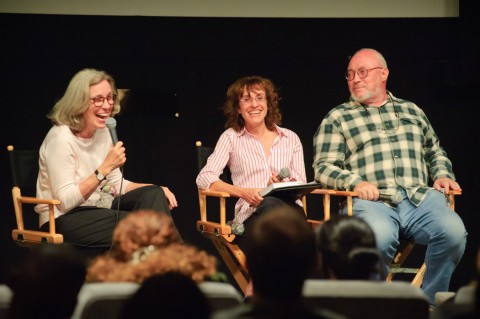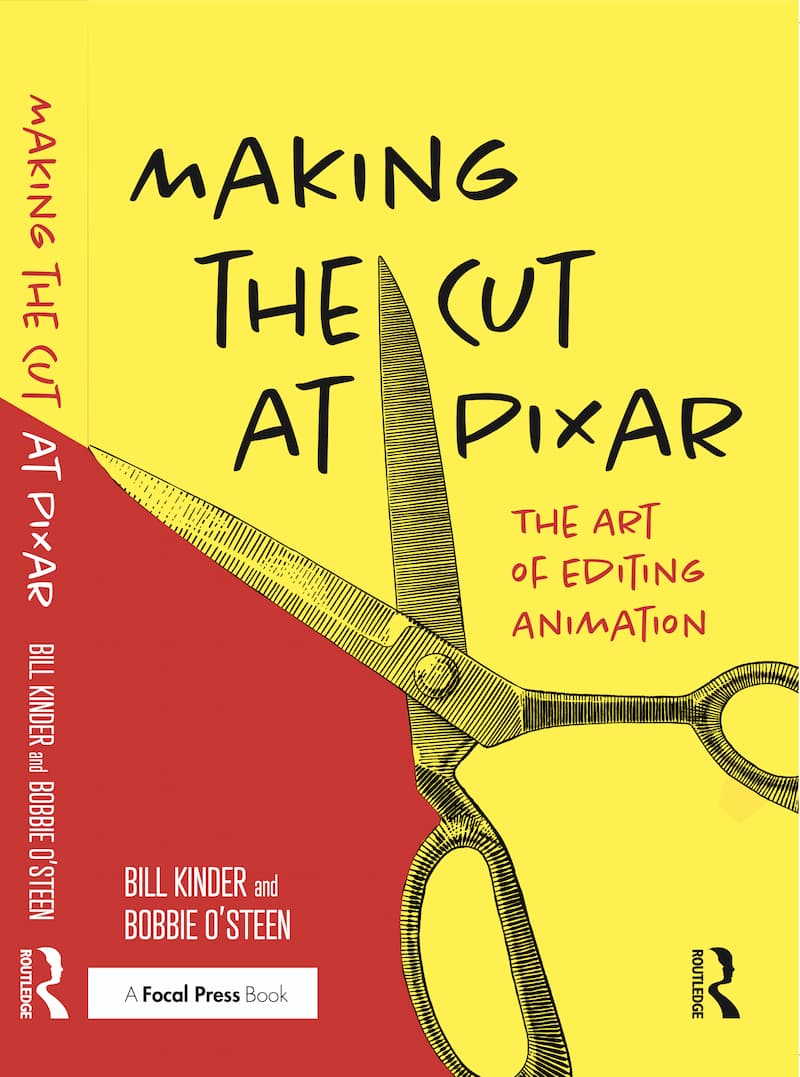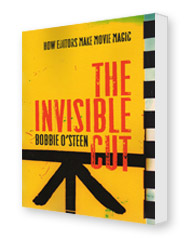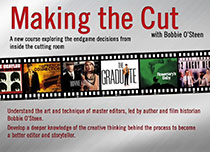
Carol Littleton, left, Bobbie O'Steen and Jerry Greenberg.
A Tribute to Two Trailblazing Editors: Dede Allen and Sam O’Steen
Moderated by Bobbie O’Steen
Jerry Greenberg, A.C.E. (The French Connection, Apocalypse Now), Oscar winner Carol Littleton, A.C.E. (E.T: The Extra Terrestrial, Body Heat), Emmy winner, Oscar-nominated
A Tribute to Two Trailblazing Editors: Dede Allen, A.C.E., and Sam O’Steen, A.C.E., moderated by Bobbie O’Steen with panelists Jerry Greenburg, A.C.E., and Carol Littleton, A.C.E., was a genuine treat. From tales of what it was like to work with Dede Allen and Sam O’Steen to analyzing scenes from Bonnie and Clyde and The Graduate, it’s not often that you get this level of candor, insight, analysis and humor. The panel really was one for which “you just had to be there,” so what follows are some excerpts from the conversation and scene analyses.
O’Steen began with a round of thank yous to panelists Littleton and Greenberg. “It’s a true honor to have them help me pay tribute to these remarkable editors,” she said. “It’s a feast of talent in memory and in reality today.” O’Steen gave extensive bios on both Allen and her late husband, O’Steen. She explained that she had conducted extensive research on Allen, but didn’t have to do the same for O’Steen––because she met him in the editing room and was married to him for 23 years.
“I think Dede Allen and Sam O’Steen took different paths in their careers but there were some interesting parallels,” she said. “Here you had two editors who were passionate and determined. Both had a hard time breaking into the business. They had hurdles and they overcame them.”
And then the conversation focused on Allen. In addition to being a pioneering editor who revolutionized editing, she was known as a great mentor. Greenberg has the distinction of being the first of “Dede’s boys,” as they were called. O’Steen asked Greenberg what it was like to be an assistant under Dede Allen––specifically, “What it was like standing between two Moviolas with Dede?”
“She didn’t have to say anything; it was what she did,” Greenberg responded. “In those days, you could sense not only what was on that other person’s mind, but how their fingers work, how their body works; you got it all. That was the best way to get to know one another––and also to anticipate what that person was trying to teach you by doing. Obviously, the nature of how things get done now is very different; there is no assistant. In the days of the Moviola, you [the assistant] did all of the housekeeping but you also did the second thinking, and that I know is missing now.”
Before looking at some clips from two seminal films––Bonnie and Clyde and The Graduate––edited by Allen and O’Steen, respectively, the moderator set up the
social/cultural context: The year was 1967, a time when studio influence was waning–– which was good for the two editors. Directors were becoming more empowered and expressive in their artistry, and, as a result, editors were also acquiring greater stature and recognition. Both those films were edited in that very crucial stage away from the studios.
O’Steen had asked Littleton and Greenberg to watch the films in preparation for the panel and solicited reactions. Littleton commented first: “It was very interesting to see them both back-to-back, primarily because I was in college when I saw these for the first time, and they became sources of inspiration for me. There was something about both of them that they were so fresh, so different and wonderfully enticing. I had the same feeling watching them again.
At the basis, these films are about searching for an identity and they are extremely involved in the characterizations and the intricacies of psychology and how these people work––and they’re unbelievably entertaining,” Littleton continued. “So it’s an incredible thing to make a film that works on those levels; we have to be concerned about when we’re cutting––on the level of plot, the level of characterization, and narrative push or narrative flow. Both of these films are more than artful; they’re strokes of downright genius as far as I can see.”
Greenberg said that watching the opening and final scenes from Bonnie and Clyde brought back memories. “I was there when the film was being edited,” he said, adding that he hasn’t watched the film since then. “That was 1967 and I choke when I say that; it’s so long ago, and yet the editing technique of mixing slow motion and fast motion, and close-ups and loose shots and all of that stuff…Dede was a mistress of all of that. She knew how to cut faster than anyone I know––and make it work.” That’s the difference.
Moving on to The Graduate, O’Steen said that Sam, longtime collaborator with Mike Nichols, was always on set for the layout of every movie he did with the director. She explained that Sam could do this because he was such a fast cutter.
“He was able to let the film stack up in the cutting room for about the first six weeks of shooting,” she said. “Then, whenever there was down time on, the set he would just cut.” Part of that reason was because he never looked at anything he cut before he showed it to a director, unless there was a specific technical problem, O’Steen revealed.
The audience was treated to two scenes from The Graduate. During the scene analysis, O’Steen pointed out the way that Sam used subliminal cutting, the use of composition within the frame to tell a story, and the use of transitions to get from one place to another. Also unheard of at the time was using the pre-released music of Simon and Garfunkel.
Read the Editors Guild coverage of my panel at EditFest LA here.




